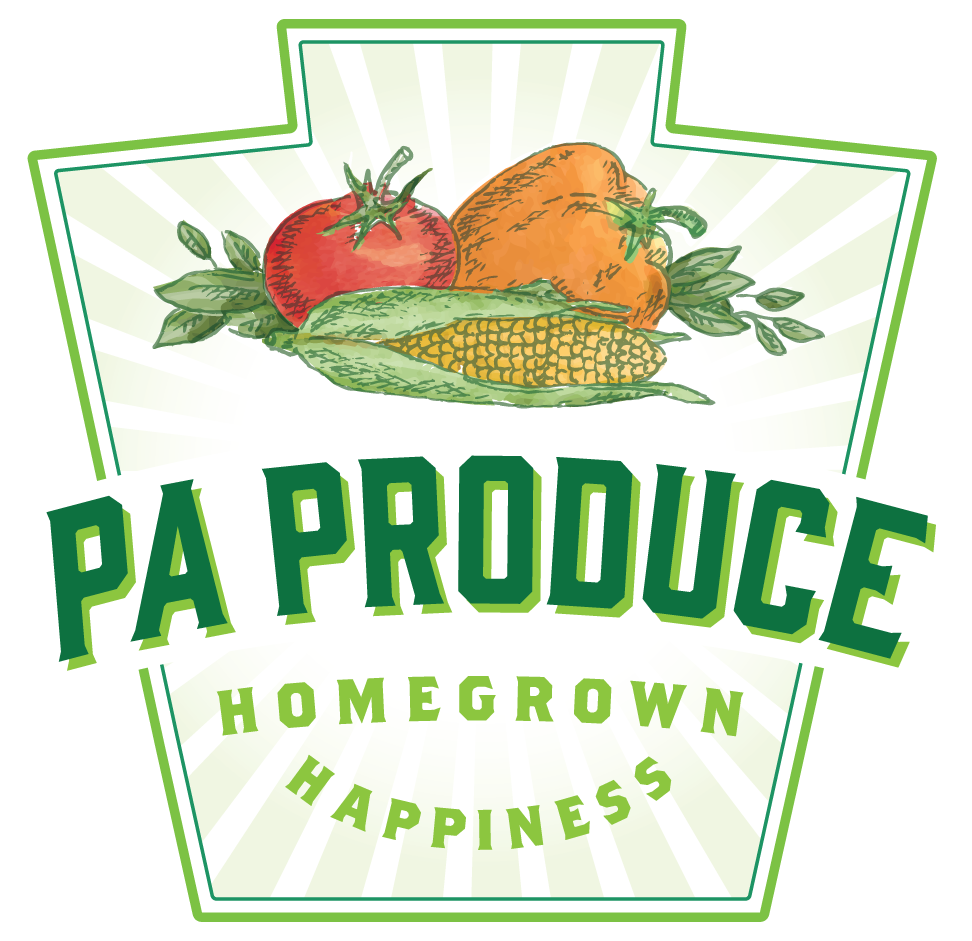FOR IMMEDIATE RELEASE: July 23, 2019
Angela Corrado
484.955.3817
Enjoy These Local Veggies in Pennsylvania This Month
The Keystone State Celebrates August as PA Produce Month for Good Reason
Harrisburg, PA – There’s no denying it’s important to celebrate local all year long but one must rally extra enthusiasm for August, the official Produce Month in our great state of Pennsylvania. For this one month out of the year, Pennsylvanians in all corners of the Keystone State should be on high alert for the freshest, most abundant and nutritious selection of vegetables available in their community. From Erie, Pittsburgh and the Susquehanna region, featuring the State College area brimming with farm land, to Harrisburg, Lancaster, Scranton, and Philadelphia, as well as its surrounding countryside – no matter where you reside, it’s likely that delicious local produce is just a short distance away. Whether you access your local food via a retail farm market, community farmers market, CSA (community supported agriculture), or your neighborhood grocer, these vegetables are at their peak in August. Stock up and enjoy!
Beets (and their greens)
Look for beets with smooth skins and no shriveling. Trim tops but do not wash before storing in the fridge. Beet greens are great in salads when young. Can be cooked as a bitter green when more mature. Our recipe suggestion: Red Beet and Candied Walnut Salad.
Broccoli
Select heads that are firm and tight. Our recipe suggestion: Broccoli, Cabbage, and Cauliflower Gratin
Cabbage
Choose cabbage heads with fresh, crispy leaves that do not contain little to no markings or browning. The head should only contain a few loose outer leaves. Our recipe suggestion: Tender Texas Cabbage Salad.
Cauliflower
The cauliflower head should feel heavy in your hand for its size. Give the leaves a good look. They should be fresh and vibrant, which is a sign that the cauliflower was recently harvested. Our recipe suggestion: Baked Cauliflower Salad and Leah Shenot’s Rainbow Cauliflower Salad.
Carrots
Choose medium-sized ones that taper at the ends, especially if you plan to enjoy them raw. Thicker, larger carrot will be on the tough side. Our recipe suggestion: Carrot Hummus.
Cucumbers
For more flavor keep the skin on. If the skin is too tough score with a fork. Our recipe suggestion: Stuffed Cucumber Slices.
Eggplant
Choose smaller eggplants as they tend to be sweeter, less bitter, have thinner skin and less seeds. Our recipe suggestion: Falafel Shack’s Baba Ganoush.
Garlic
Well cured garlic can be stored in a cool, dark, dry place and last up to a year. Our recipe suggestion: Snap Beans with Pancetta and Roasted Garlic.
Kale
Young kale can be eaten fresh in a salad. Mature kale can be cooked and added to just about everything! Our recipe suggestions: Kale Stems Pesto.
Lettuce
Lettuce is sweetest in the spring and fall. Our recipe suggestion: Melon and Strawberry Salad or your House Salad with a Chopped Salad Dressing.
Lima Beans
Excellent in salads, the lima beans’ seeds are generally cream or green in color, although certain varieties feature colors such as white, red, purple, brown or black. Our recipe suggestion: Lime Bean Salad with Prosciutto and Arugula.
Onions
Store in a cool, dark place. Onions can keep for months when stored properly. Older onions have a more pungent taste. Our recipe suggestion: Stuffed Sweet Onions.
Peppers
The hotter and dryer the season the hotter a pepper will be. Our recipe suggestion: Pepper Dip.
Sweet Potatoes
Select sweet potatoes that are firm, free from decay and have a deep color. Smaller ones tend to be sweeter. Our recipe suggestion: Grilled Sweet Potato with Jalapeno Honey.
Snap/String Beans
Smaller evenly plump pods are the best. The bigger the bean pod the tougher it will be. Our recipe suggestion: Snap Bean Picnic Salad.
Squash
Look for squash that are small – just 6- to 8-inches in length and still relatively thin – for salads and stir-fry. Larger squash can be shredded for breads and other recipes. The zucchini should feel heavy for its size. The skin should be dark green and smooth and free of blemishes. Our recipe suggestions: Chocolate Muffins, Zucchini Noodles, and Pan Fried Fritters.
Sweet Corn
Look for tassels that are brown and sticky to the touch. If they’re dry or black, then it’s an old ear of corn. Our recipe suggestion: Grilled Sweet Corn Salad with Honey-Lime Vinaigrette.
Swiss Chard
The entire plant is edible but the stem is tougher than the leaves and, if cooking, will require about an additional 5 minutes of cooking time. Our recipe suggestion: Pasta Verde with Swiss Chard, Asparagus and Artichoke Hearts.
Tomatoes
Some growers are switching to high tunnel systems enabling them to bring the first tomatoes to market as early as May. Our recipe suggestion: Smoked Heirloom Gazpacho and Tina Forry’s 5 Minute Salsa.
Tomatillo
Keep the paper husk of the tomatillo on until you are ready to use. Our recipe suggestion: Smoky Salsa Verde.
The Pennsylvania Vegetable Marketing and Research Program is a statewide marketing order established by a grower referendum, governed by a grower board and funded by grower assessments. The Program’s sole purpose is to serve the vegetable growers of Pennsylvania by promoting Pennsylvania-grown vegetables and funding practical vegetable production research. Consider liking PA Veggies on Facebook (PAVeggies), following along on Instagram (@PAVeggies), subscribing to our YouTube channel, and using #PAVeggies to find and share your homegrown PA happiness experiences.
EDITORS: If you have any questions, please contact Angela ℅ PA Veggies at 484.955.3817 or [email protected].
